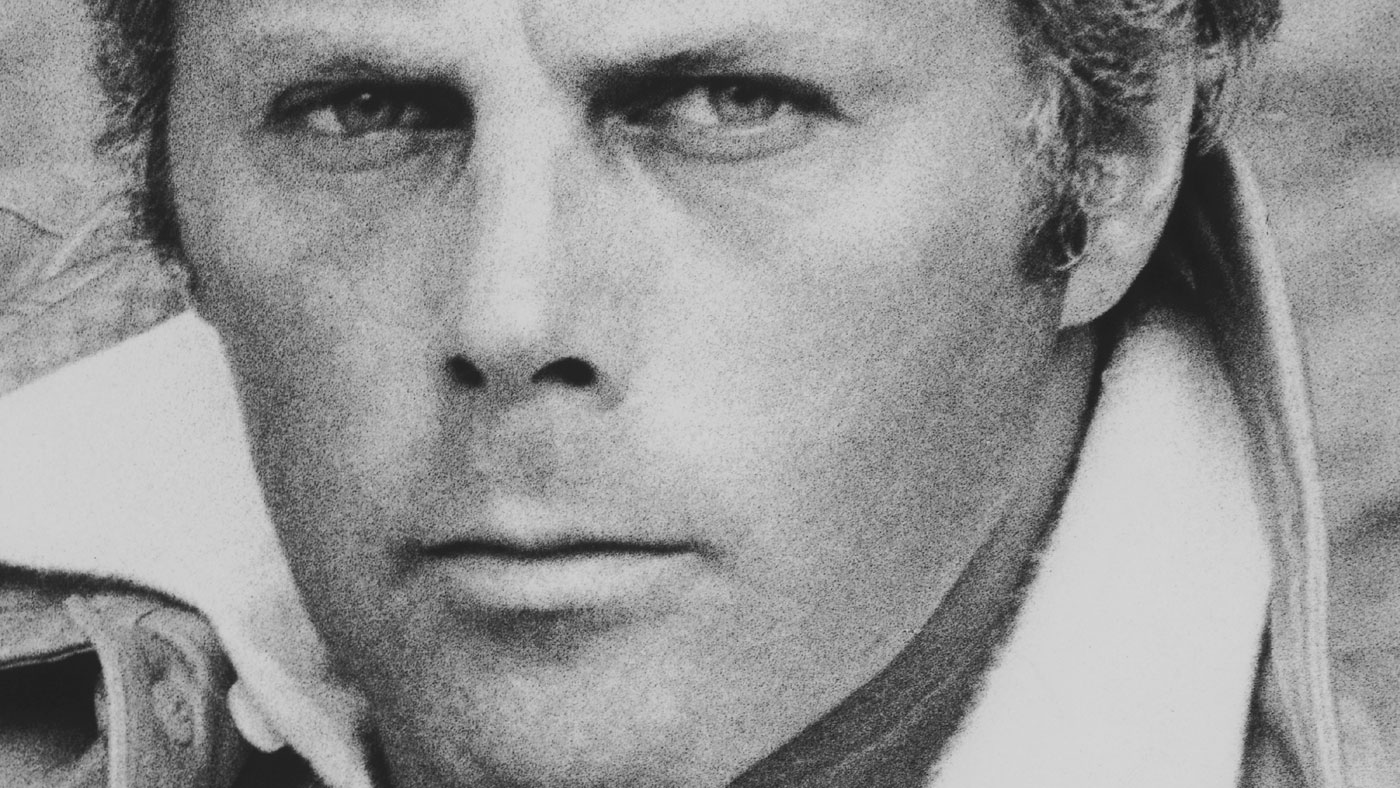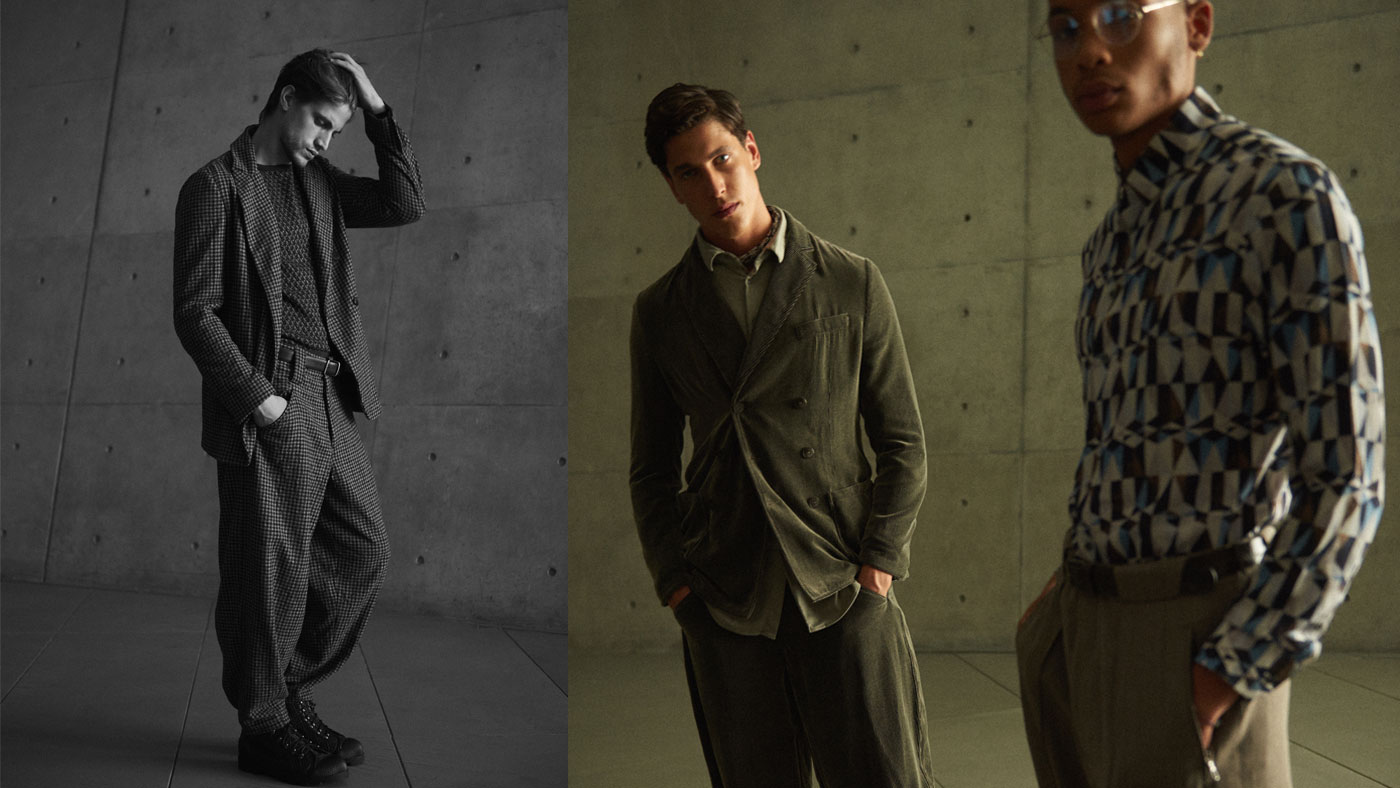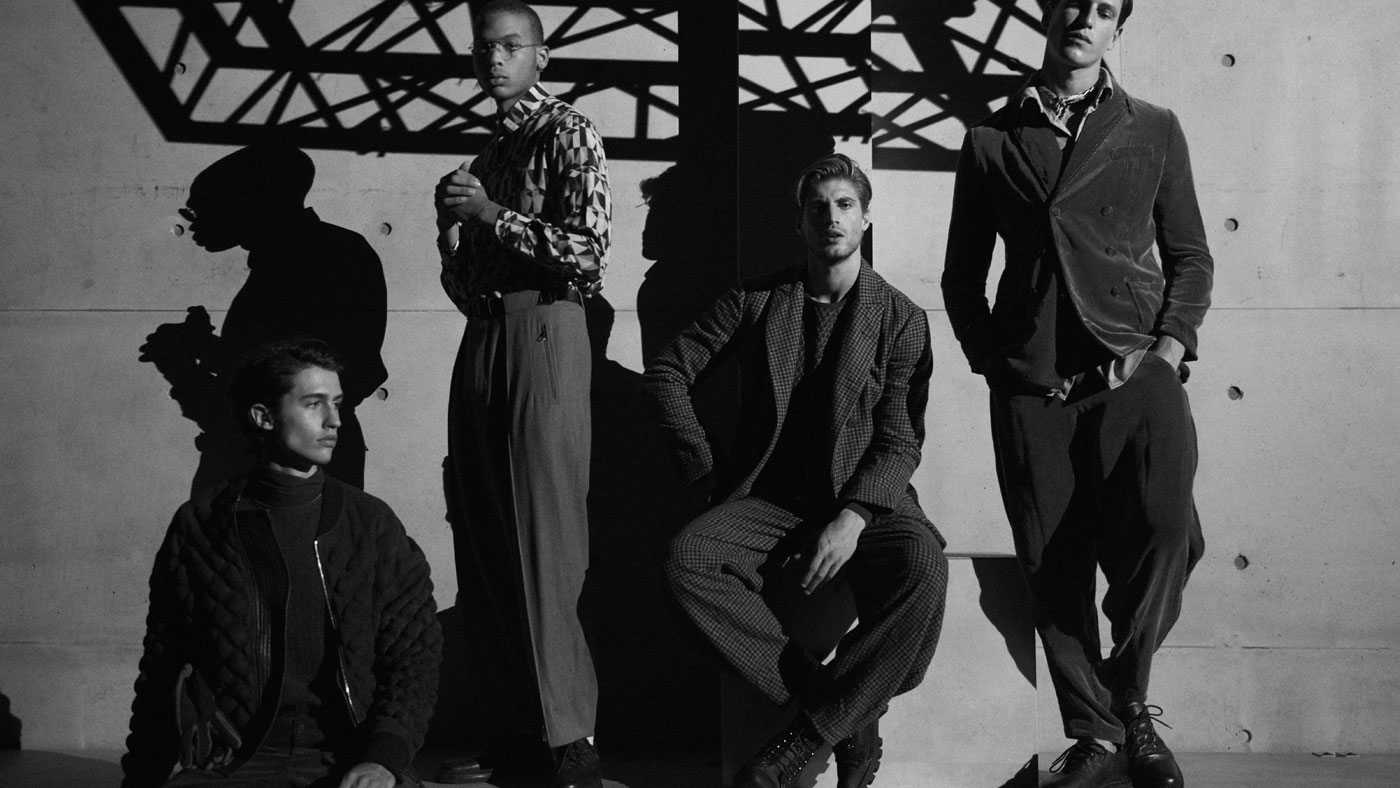Giorgio Armani: Master of elegance
The king of understated dress, Giorgio Armani explains why great style requires charm, confidence and a dash of daring

Giorgio Armani will forever be celebrated as the man who, in the mid-'70s, freed men’s suiting from rigid tailoring, ripping the guts out of jackets and doing away with padding to create a looser, more fluid look in superior fabrics, from fine wool to lightweight linens and soft Italian cottons. It was a revolutionary moment in fashion; one that changed both men’s and women’s suiting for ever. The designer unpicked the seams of structured tailoring and paved the way for more casual dress codes, bringing refinement, style and subdued elegance to a decade otherwise defined by flamboyance.
By the '80s, Armani’s version of power dressing was not about ostentation and self-aggrandisement, but rather it aimed to seduce, marking a move towards a new luxury ideal: that of fashion being just one branch of a broader, more discerning metropolitan attitude. Armani drove the desire for a pared- back, edited lifestyle, propelled by a timeless aesthetic that continues to be the touchstone of his universally powerful brand to this day.
There is perhaps no place that sums up the enduring spirit of Giorgio Armani better than the Teatro Armani in Milan – the location of our fashion shoot. This sprawling 3,400-square-metre space – a former Nestlé factory – south-west of the city is a place of no visible boundaries; an orderly palace in concrete, steel and glass, which perfectly embodies the designer’s uncompromising, purist vision – a constant throughout his 40-year career. But for all its minimalist beauty, the Teatro is also a place of celebration and creativity: apart from hosting his own-brand runway shows here, every year Armani invites a young Italian designer to showcase their collection at the space during Milan Fashion Week. 'King Giorgio', as he is known in Italy, is all about continuity and progress, even if he has remained faithful to a distinct brand of elegance throughout his career.
The Week
Escape your echo chamber. Get the facts behind the news, plus analysis from multiple perspectives.

Sign up for The Week's Free Newsletters
From our morning news briefing to a weekly Good News Newsletter, get the best of The Week delivered directly to your inbox.
From our morning news briefing to a weekly Good News Newsletter, get the best of The Week delivered directly to your inbox.
I meet Armani at the Teatro, prior to his spring/summer 2018 menswear show. The notoriously media-shy designer gives very few interviews, so it’s an honour to observe him backstage, adjusting collars, pulling up sleeves and placing sunglasses on the heads of models before sending them down the runway with a paternal pat on the shoulders.
The enigmatic Italian who at the age of 83 remains the sole owned of his global brand, is well known for his scrupulous attention to detail as well as his earthy/stony colour palette inspired by the starker, more industrial landscapes of northern Italy; nothing gets past him, or so I am told by one of his close colleagues. "Mr Armani looks right at you and into your soul; he can smell bulls***," warns his associate, unnervingly.
I’m confident, however, that my soul will survive the scrutiny, as we have met before. The first time was in 2004 when I attended a summer party at his home in Milan during the UEFA European Championship. A friend and I mischievously snuck off to watch the match in a private room, but we were rumbled by the great man himself, who was charmingly unfazed by our clandestine football viewing and merely asked us the score. This chance meeting was enough to convince me that Giorgio Armani does indeed deal in honesty.
The designer looks remarkably good for his age – all perma-tanned with snowy hair and piercing cobalt blue eyes, his teeth the perfect shade of Hollywood white. Armani takes care of his physique and has often cited the importance of having a strong body to match an active mind. Last year, he conceived and curated a photography exhibition titled Emotions Of The Athletic Body at the Armani/Silos fashion art museum across the road from the Teatro; the collection of body- beautiful images featured famous sportsmen and sportswomen who have starred in Armani campaigns, including David Beckham, Serena Williams and Rafael Nadal.
A free daily email with the biggest news stories of the day – and the best features from TheWeek.com
Although well into his eighties, Armani continues to micromanage all areas of his business. The indefatigable designer is quick to point out that staying busy also keeps him young. "At work, I am very focused, and I dedicate all of myself, " he says. "My days are really intense, but I have to admit that having to pay attention to so many different things keeps me alert and quick, and this is a priceless challenge. The rest is a mixture of creativity and discipline. "
Armani’s perfectionism explains why he has kept such a tight grip on his business for more than 40 years. Estimated by Forbes to be worth more than $8billion, his empire now encompasses luxury hotels and cafes, fragrances and cosmetics, as well as furniture and even confectionery.
Today, despite the pressure of his menswear show, the designer is just as affable. Conversing exclusively in Italian – he speaks little English – Armani politely asks where I am spending the summer. Ibiza, I tell him, to which he exclaims, "Una bella isola!" He loves the northern part of the island, he says, with an endearing smile. Armani’s summers are usually spent aboard his superyacht, a magnet for A-listers but a thing of understated beauty nonetheless, clad in military green – to discreetly blend in with the sea – and kitted out with Armani/ Casa high-luxe furnishings.
Everything he touches bears the Armani stamp: elegance in line with comfort and function, using the very best materials. This timeless approach to fashion has attracted a degree of criticism from those who claim his style has stagnated. But Armani has never felt the need to veer off-course; he is one of the few designers – if not the only – to remain impervious to transient trends for more than four decades. Beautifully made pieces that compound a softened elegance are key, he maintains, to projecting a confident self-image. "The man’s wardrobe must have a timeless blue suit, suitable for a variety of occasions; a black jacket, jeans, a white or blue shirt, and a long coat, " he says. "I believe that for men, perhaps more than for women, it is also important to focus on the right accessories; an elegant watch and pair of glasses are certainly capable of adding personality to the look."

This sense of fashion as attitude first leapt into the collective consciousness thanks to the cool confidence of an Armani-clad Richard Gere in the 1980 movie American Gigolo. It’s safe to say the film remains one of the most successful brand promotions of all time, establishing the idea of the quintessential 'Armani Man'. "The goal was to propose an innovative idea, exploit its uniqueness and sell it in the most intelligent way possible,” Armani says of this seminal celluloid moment. “The costumes for American Gigolo were a particularly effective marketing move that made my brand one of the most beloved in Hollywood. "
Armani’s relationship with Tinseltown is arguably one of the strongest in fashion history: many a leading lady has walked the red carpet dressed in a gown from his haute couture line, Armani Privé. Once again ahead of his time, he also popularised the power suit for women during the economic boom of the '80s, ripping up the rulebook of gender-specific dress codes. "Being an Armani man and an Armani woman is a matter of personal attitude, a way of thinking and carrying oneself," explains the designer, repeating a long-held mantra. Like his designs, the Italian’s rhetoric is clear-cut and confident; the Armani customer has, since the '80s, always stood for the same ideal. "The Armani man is at ease in a metropolitan context, and nevertheless his attitude shows complete relaxation," he says today." The Armani woman is aware and sophisticated, and uses her clothing as a way to represent herself, not as a disguise."
Remarkably, fame and fortune came late in life for Armani. He founded his company in 1975 with his late business/life partner Sergio Galeotti; aged 40 at the time, he had previously worked as a menswear designer for Nino Cerruti. Armani credits Galeotti with giving him the confidence to start his own label: "Thanks to the encouragement of Sergio Galeotti, my friend and partner, I dove into a venture that has now become a significant business group. Courage is always rewarded."
As a teenager growing up in the city of Piacenza, just 70km from Milan, Armani had harboured dreams of becoming a doctor. He studied medicine at the University of Milan as a young man, but dropped out to complete his military service; after that, he worked as a window dresser at La Rinascente, Milan’s luxury department store. One can imagine the moments of self-doubt that Armani experienced in the years leading up to his and Galeotti’s business venture; at the age of 40, this was a case of all or nothing. Nevertheless, he maintains that the mid-’70s was an era of opportunity.
"I started out when everything seemed possible, and the fashion system was infinitely smaller and more humane," Armani says. "Today, fashion is an immense and sprawling industry that at times risks crushing creativity." For this reason, in 2013 the veteran designer launched a programme to support young Italian fashion design, offering his Teatro Armani to emerging names in the industry as a catwalk space.
But what of the young 'Armani Man' today? He’s perhaps more casual, but no less elegant and refined. As the designer’s spring/ summer 2018 looks make their way down the Teatro runway, it’s clear that his enduring relaxed silhouette has adopted a sportier feel, but the materials – the magic behind Armani’s design mastery – are full of mesmerising contradictions: rich, knitted, crumpled and complex, or subtly patterned, light and silky.

"Materials are fundamental for me; I prefer those that are fluid, soft, and intense to the touch, " he explains." I like to juxtapose light and heavy, silky and rough textures. To give you an example, I love velvet as much as tweed. In principle, I do not exclude any material."
Naysayers may claim he lacks innovation, but Armani consistently reconfigures a very precise strand of classicism year after year to match the changing demands of
the modern man and woman; this is arguably just as challenging as conceiving a collection from scratch, which has fewer style parameters and is therefore more likely to be deemed groundbreaking.
Armani is also correct to point out that his innovations are sometimes subtler but no less revolutionary than those credited to his contemporaries; he ensures that changes, no matter how technical, are undercurrents rather than swelling statements that will engulf his modernist approach. Speaking about the sportswear trend that has permeated the luxury market over the last five years, he says, "I was among the first to venture down this path and experiment with it in my collections. It is certainly the future of fashion, while also bearing in mind that the future is made of categories that come together. Sportswear and formal wear can and must blend to form something new."
The biggest question is: who will take over the empire when Armani finally decides to hang up his boots? The Italian has purposely remained quiet on the matter for years, and he won’t be revealing his plans for the business any time soon. There’s far too much going on in the near future to be bogged down by the politics of succession: after taking his bow at the Teatro, King Giorgio must begin preparing for the Emporio Armani womenswear show in London – the label’s first runway on UK soil since his 'One Night Only' show in 2006.
The event coincides with the opening of the newly renovated Emporio Armani concept store on Bond Street." British men are more formal than the Italians, while also nonchalant at the same time," says Armani of his male customer in the UK." My man here is more eccentric, even when it comes to choosing the details. " As this fashion legend says, courage is always rewarded, but a flair for perfectionism and a keen eye for detail will also do you proud.
Story by Ian Thorley
Photography by Nicolò Parsenziani
Fashion by Naz Di Nicola
-
 The rise of runcations
The rise of runcationsThe Week Recommends Lace up your running shoes and hit the trails on your next holiday
-
 Amorim follows Maresca out of Premier League after ‘awful’ season
Amorim follows Maresca out of Premier League after ‘awful’ seasonIn the Spotlight Manchester United head coach sacked after dismal results and outburst against leadership, echoing comments by Chelsea boss when he quit last week
-
 January’s books feature a revisioned classic, a homeschooler's memoir and a provocative thriller dramedy
January’s books feature a revisioned classic, a homeschooler's memoir and a provocative thriller dramedyThe Week Recommends This month’s new releases include ‘Call Me Ishmaelle’ by Xiaolu Guo, ‘Homeschooled: A Memoir’ by Stefan Merrill Block, ‘Anatomy of an Alibi’ by Ashley Elston and ‘Half His Age’ by Jennette McCurdy